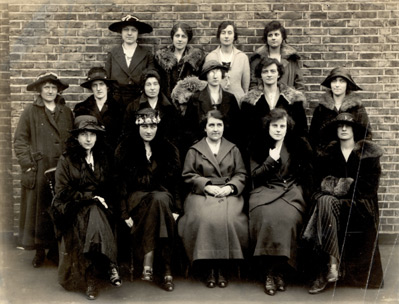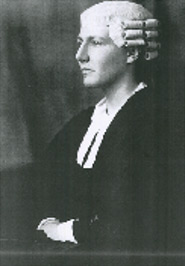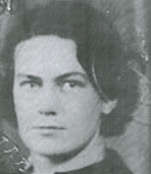Centenary of women’s suffrage - 100 years of women in MI5
14 Dec 2018 02:18 PM

The role of women in MI5 in WW1 is summarised in a report of April 1920 which was reviewed and released to the National Archive (TNA) by MI5 in the late 1990s.MI5 is celebrating the centenary of women’s right to vote with a number of events. In particular, our gender network is championing notable women throughout MI5’s history in recognition of the vital role women played (and continue to play) in achieving our mission of keeping the country safe.
The report summarises the vital role women played and covers the diversity of their work:
These women gave ungrudging service to what they rightly considered to be ‘war work’ of great importance … in many cases they were women of particular ability. The work was exacting and continuous, the office never being shut day nor night, work going on without a break on Sundays, Christmas Days and Bank Holidays as on weekdays. The staff worked in 8 hour shifts, but the urgency of the work and the vital importance of tracking down the potential spy, together with the enormous mass of papers to be dealt with necessitated a great deal of overtime. The staff was not paid for overtime, indeed the authorities, realising the great strain involved, endeavoured to discourage it, but the extra hours were given willingly by the women from motives of patriotism and keenness in their work ...
The report concludes:
… Nor does this report seek to prove that the value of work done by the women exceeded the value of the work done by the men employed in MI5. Far from it. It was the union of men and women in the work to which the department owed its success, each bringing into the common stock their own peculiar qualities and thus complementing the work of the other …
The following are a few examples of women from our history who were transformational.
Jane Archer née Sissmore
 Jane Archer was arguably the first woman to achieve real distinction in MI5 and Christopher Andrew writes about her at some length in ‘The Defence of the Realm’.
Jane Archer was arguably the first woman to achieve real distinction in MI5 and Christopher Andrew writes about her at some length in ‘The Defence of the Realm’.
Jane joined as a typist/clerk in the Registry in 1916, earning 30 shillings a week. Her organisational qualities were quickly recognised and in 1923 she was awarded an MBE. Whilst still working for MI5, she decided to acquire a formal qualification and was called to the Bar in 1924. In 1928 she became Controller of the Registry. Soon after she became a desk officer heading investigations into Soviet espionage. In 1935 Vernon Kell wrote glowingly of her "brilliant and devoted efforts". However, perhaps her single greatest achievement was her interrogation in 1940 of Anatol Krivitsky, the Soviet intelligence defector. This was conducted every day for three weeks in the Langham Hotel in London. Jane’s long report of it has been described as a model of its kind and reads as if it could have been written yesterday. In the words of one of our early histories, it gave MI5 “its first insight into the machinery of the Russian Secret Service”.
From 1929 onwards Jane was in sole charge of MI5’s coverage of Soviet espionage, a subject of growing concern., This was a remarkable achievement - more so as the department at that time was hugely male-dominated.
Millicent Bagot – leading expert on Soviet Communism
Millicent Bagot, a 24 year old Oxford classics graduate, joined MI5 in 1931 along with a small group of others from the Metropolitan Police Special Branch, who had been dealing with Communist and foreign revolutionary movements. She spent the war working as a clerk in the Registry and the counter subversion section, first at Wormwood Scrubs and then at Blenheim Palace. After the war she spent a short period in the Middle East advising British authorities there on countering Soviet subversion. By 1949 she was recognised as a leading expert on Soviet Communism with an encyclopaedic knowledge that even impressed J Edgar Hoover. In the same year she was promoted to officer and awarded an MBE for her expertise, dedication and tenacity of purpose.
In 1953 she was promoted to Assistant Director, the first female intelligence officer in MI5 to gain this rank, and she took charge of a section in the Overseas Branch. She was awarded a CBE in 1967.
Mary Sherer – MI5’s first female agent runner
 Mary Sherer, MI5’s first female agent runner, joined in 1936 aged 21 as a secretary. After a posting as PA to DSO Malta she returned to Head Office on the outbreak of war as assistant to Lord Rothschild. Rothschild was the nation's leading authority on German and Italian sabotage methods. Mary did well and was promoted to desk officer. In 1942 she was posted to Washington as adviser on sabotage to the Head of British Intelligence and Security in North America. On her return to London the following year Mary was posted to the section responsible for turning German agents back against their masters for intelligence and deception purposes. There she was given sole charge of the double agent TREASURE. TREASURE was French and a talented artist; she had volunteered to the Germans with the express intention of double crossing them, contacting the allies and working for the overthrow of the Nazis. When the Germans took her up, she immediately contacted the British Embassy in Madrid and was flown to London, where she was interrogated by Mary. In her book Secret Service Rendered, TREASURE describes Mary at their first meeting as "sitting on the edge of a chair, her arms folded, and chin resting on her hands. She glances at me through slightly slanted green eyes, her gaze is not friendly". From then until 1944 she worked under Mary's control as a deception agent. Although TREASURE proved valuable, by 1944 suspicions were arising that she had concealed from us some important information given to her by her German controller. However Mary, with great skill, eventually got the truth from her. Mary was highly commended for her high-quality work on the case but chose to leave MI5 after the war.
Mary Sherer, MI5’s first female agent runner, joined in 1936 aged 21 as a secretary. After a posting as PA to DSO Malta she returned to Head Office on the outbreak of war as assistant to Lord Rothschild. Rothschild was the nation's leading authority on German and Italian sabotage methods. Mary did well and was promoted to desk officer. In 1942 she was posted to Washington as adviser on sabotage to the Head of British Intelligence and Security in North America. On her return to London the following year Mary was posted to the section responsible for turning German agents back against their masters for intelligence and deception purposes. There she was given sole charge of the double agent TREASURE. TREASURE was French and a talented artist; she had volunteered to the Germans with the express intention of double crossing them, contacting the allies and working for the overthrow of the Nazis. When the Germans took her up, she immediately contacted the British Embassy in Madrid and was flown to London, where she was interrogated by Mary. In her book Secret Service Rendered, TREASURE describes Mary at their first meeting as "sitting on the edge of a chair, her arms folded, and chin resting on her hands. She glances at me through slightly slanted green eyes, her gaze is not friendly". From then until 1944 she worked under Mary's control as a deception agent. Although TREASURE proved valuable, by 1944 suspicions were arising that she had concealed from us some important information given to her by her German controller. However Mary, with great skill, eventually got the truth from her. Mary was highly commended for her high-quality work on the case but chose to leave MI5 after the war.
MI5 today
MI5 continues to be committed to improving gender representation at all levels which is why our DG was one of the first public sector leaders to join the 30% Club. All our staff have something to offer to our mission and we’ll continue to be the best we can because we want to be an exemplary role model for others.